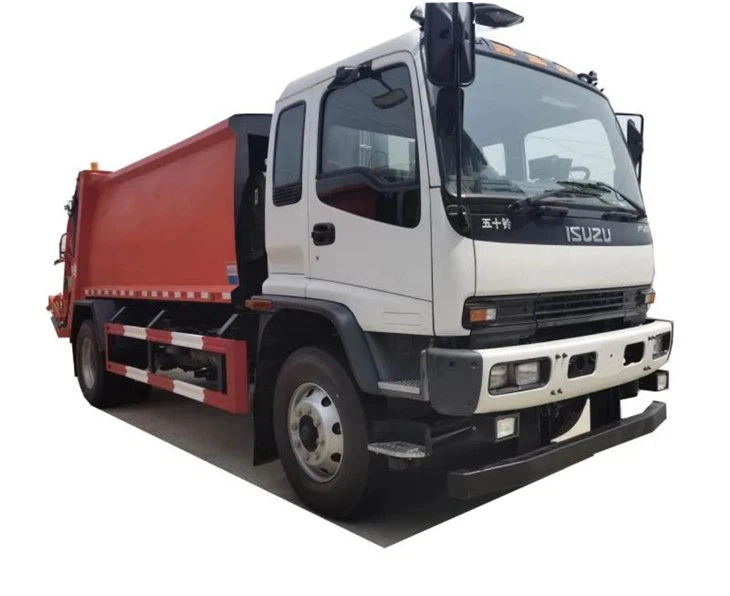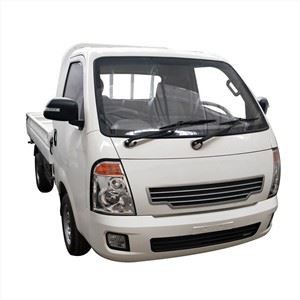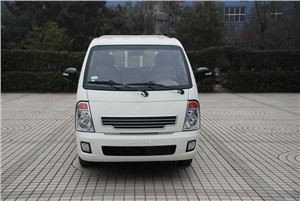All You Need to Know About Trucks with Side Loaders

Introduction
Trucks with side loaders have revolutionized the way we think about waste collection and transportation. Designed for efficiency and productivity, these vehicles are commonly used by municipalities and businesses alike to handle refuse and recyclable materials. The innovative design allows for easy access to the cargo from the side of the truck, improving loading times and reducing the need for additional manpower. In this comprehensive article, we will explore the various aspects of trucks with side loaders, including their features, benefits, applications, and much more.
What is a Truck with Side Loader?
A truck with a side loader, also known as a side-loading refuse truck, is equipped with mechanisms that allow it to pick up and load materials from the side. The side loader typically features hydraulic arms that extend out to grab waste containers, tilt them, and empty their contents into the truck’s cargo area. This design is particularly beneficial for urban environments, where space may be limited.
Key Features of Side Loader Trucks
- Hydraulic Arms: These enable the automatic loading of containers without the need for manual labor.
- Compact Design: Side loaders are designed to navigate narrow streets and tight spots easily.
- Increased Efficiency: The side-loading mechanism reduces the time required to collect waste, allowing for more stops in a shorter period.
- Versatility: Suitable for various waste types, including recyclables, green waste, and general refuse.
Benefits of Using Trucks with Side Loaders
Utilizing trucks with side loaders comes with various advantages. Let’s delve into some of the key benefits:

Enhanced Safety
Side loaders minimize the need for workers to step out of the truck and into traffic, reducing the likelihood of accidents. Loading from the side also keeps workers centered and controlled, making it a safer option for waste collection.
Reduced Labor Costs
By automating the loading process, side loaders can significantly reduce the number of personnel required for refuse collection. This efficiency translates into cost savings for municipalities and companies.
Time Efficiency
The ability to load waste quickly leads to better time management for collection routes. Side loaders can often complete routes more quickly than traditional rear loaders, leading to higher productivity.
Types of Side Loader Trucks

There are several types of side loader trucks, each designed for specific applications.
Automated Side Loaders
Automated side loaders use advanced technology to operate the loading arms. These trucks can be controlled remotely, making them highly efficient for use in busy urban settings.
Manual Side Loaders
While less common today, some trucks still require manual operation of the loading mechanism. These models may be more affordable but can demand more labor input.
Split-Body Side Loaders
These specialized trucks come with a partitioned cargo area, enabling them to collect different types of waste simultaneously. This feature is particularly useful for recycling programs.
Applications of Side Loader Trucks
Trucks with side loaders are used in various sectors. Here are some common applications:
Municipal Waste Collection
Many cities utilize side loader trucks for residential waste collection due to their efficiency and ability to navigate crowded streets.
Commercial Waste Management
Businesses, particularly those in industries producing a high volume of waste, benefit from side loader trucks to manage their refuse without interruptions.
Construction and Demolition
Side loaders are frequently employed in construction zones to handle debris, offering a quick solution for managing site waste.
Choosing the Right Side Loader Truck
Selecting the appropriate side loader truck involves several considerations. Here are some tips to help guide your decision:
Evaluate Your Needs
Consider the specific requirements of your waste collection operation, including the type of materials you handle and the volume of waste generated.
Consider Your Budget
Side loader trucks come with varying price points. Ensure you factor in both upfront and long-term operational costs when making your selection.
Check for Compatibility
If you already have waste containers, make sure any side loader you consider is compatible with them to avoid additional costs.
Maintenance of Side Loader Trucks
Like all vehicles, side loader trucks require regular maintenance to ensure they operate efficiently.
Routine Inspection
Inspect components like hydraulic pumps and arms regularly. Early detection of issues can prevent costly repairs and downtime.
Fluid Checks
Regularly check hydraulic fluid levels and perform oil changes as recommended by the manufacturer. Clean fluids are vital for efficient operation.

Tire and Brake Maintenance
Ensure tires are adequately inflated and brakes are functioning correctly as these are crucial for safe operation.
Cost of Ownership for Side Loader Trucks
Understanding the cost structure associated with purchasing and maintaining a side loader truck is crucial.
Initial Investment
Prices for side loader trucks vary greatly based on features and brand, typically ranging from $250,000 to over $500,000.
Operational Costs
Be aware of fuel consumption, maintenance expenses, and insurance when calculating the total cost of ownership.
Resale Value
Side loader trucks generally have good resale value, especially if they are well-maintained. Keeping detailed records of maintenance can help secure a higher resale price.
Practical Examples and Tips for Operators
For successful operation and usage of side loader trucks, consider the following practical examples and tips:
Effective Route Planning
Use route optimization software to plan efficient collection routes. This can save time and reduce fuel consumption.
Proper Training
Ensure all operators are trained adequately on how to use the side loader mechanism. Familiarity with the truck’s controls and safety features enhances overall safety and efficiency.
Utilize Technology
Incorporate telematics systems to track vehicle performance and maintenance schedules. This data can inform operational improvements and reduce downtime.
Frequently Asked Questions (FAQs)
1. What is the primary use of a side loader truck?
Side loader trucks are primarily used for waste collection, allowing for efficient and safe loading of refuse and recyclable materials from the side of the vehicle.
2. How does a side loader truck work?
A side loader truck uses hydraulic mechanisms to lift containers from the side, tilting them to empty their contents into the truck’s cargo area without requiring manual handling.
3. Are side loader trucks environmentally friendly?
Yes, side loader trucks can be more environmentally friendly as they allow for quick and efficient collection of recyclables, leading to better waste management practices.
4. What maintenance is required for side loader trucks?
Regular maintenance includes hydraulic fluid checks, routine inspections of components, tire checks, and brake maintenance to ensure reliability and safety.
5. How much does a side loader truck cost?
The cost of side loader trucks can range from $250,000 to over $500,000 depending on features, brand, and model.
6. Can side loader trucks handle hazardous waste?
While some side loader trucks are designed for specific waste types, handling hazardous waste may require specialized equipment and protocols.
